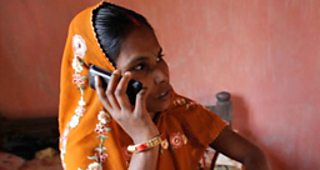Fifteen years ago I co-wrote a report, Telecommunications, Development and the Market, followed shortly afterwards by another entitled The Internet and Poverty both of them published by the Panos Institute.��Thirteen years before that, in 1984, a British civil servant, Sir Donald Maitland, chaired a landmark Commission for Worldwide Telecommunication Development.��
How best to work with new technologies to advance development is no new discussion.�� All of the signs, though, are that this issue is moving at last from the periphery of development strategy towards the heart of it.
The UK's Department for International Development (DFID) and Omidyar Network will host the Open Up! conference on the use of technology and development in London's 'Tech City' on Tuesday 13 November 2012. I will talk at a linked meeting at DFID on Wednesday exploring digital development partly about how organisations like ourselves use new technologies and partly - based on sometimes painful experience - how development organisations succeed and fail in integrating communication technologies into their programming.��
For ������̳ Media Action, an organisation traditionally associated with old media, new media is rapidly becoming a cornerstone of ������̳ Media Action’s work in the developing world.
Take Sema Kenya (Kenya Speaks) - a TV and radio debate show conducted in Kiswahili - which brings Kenyans face to face with their elected political leaders, very often for the first time. In the run up to the March 2013 general elections in Kenya, the show is travelling the country to areas often overlooked by the media. For viewers who can't participate on location, social media is now facilitating dialogue with those in power and holding them to account.
Last weekend, for example, Sema Kenya was broadcast live from Naivasha, a market town in the Rift Valley province north west of Nairobi. The show opened with moderator Joseph Warungu addressing the local MP for Naivasha, the Honourable John Mututho, as follows:
"We have a question that was asked via our Facebook page by George Otieno Opiyo. He says that Kenyans were affected by the 2007 post-election violence and that Naivasha was the centre of this violence, so what are the leaders and the residents doing so that this does not happen again?"
George is a security guard who couldn't attend the debate in person that day. While the MP responded to George's question with assurances about local efforts at reconciliation and security, he was challenged by members of the studio audience, who claimed that they had not seen him in the area since his election.
The conversation continued on Twitter and Facebook, with one comment claiming that in Naivasha "…displaced persons have been denied their rights and many others are still affected to date" and another saying of Mr Mututho and his constituents, "Thanks to ������̳'s Sema Kenya they've met one on one".
Sema Kenya's format is being replicated by ������̳ Media Action across the developing world. Aswat min Filasteen (Voices from Palestine), for example, is visiting cities and towns across the West Bank to debate the political, economic and social issues affecting Palestinians today. Not only are these debates driven by questions posted on the show’s social media sites, but online platforms have in turn thrown these issues open to Palestinians in Gaza, people across the Arab world and the Middle Eastern diaspora in Europe more broadly.
It's not only in the area of governance where new technology has been harnessed to address development challenges. A 2012 ������̳ Media Action policy briefing – ��PDF (3.56MB) – examined the role that social media and new technology play in disaster relief, and found that these tools are being widely used to devise smart, localised responses to crisis.
We are also discovering new ways to change lives using communications technology in the health field.

Our colleagues in India have pioneered a way to use inexpensive, basic mobile handsets to train hundreds of thousands of community health workers in delivering life-saving maternal and child health information to millions of rural families in the northern state of Bihar.
������̳ Media Action has always used radio and television to reach millions of marginalised people with the information they need to change their own lives. Innovation is being driven by dozens of organisations working in the development field and I'm looking forward to learning from them, but determined too that a fairly large and traditional organisation can remain at the forefront of innovation ourselves.
Join in at using the hashtag #OpenUp12.
Elsewhere on ������̳ Media Action
